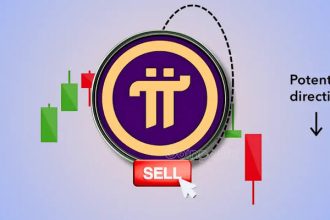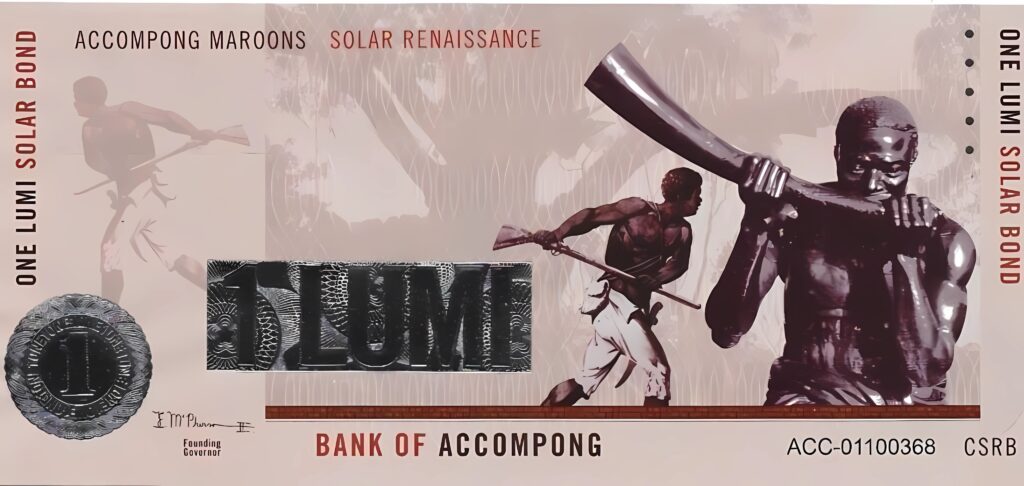Historical and Cultural Roots of the LUMI
To understand the LUMI, it is essential to appreciate the historical and cultural background of its birthplace, the island of Xaymaca more commonly known as Jamaica. Jamaica has long been associated with individuals who have achieved global recognition. From Usain Bolt, the fastest man on earth, to Bob Marley, the legendary reggae musician, the island is no stranger to world-class achievement. The island also has a powerful heritage rooted in resistance and sovereignty, represented by Queen Nanny of the Maroons, one of the most revered leaders in African diasporic history. Another towering figure, Marcus Garvey, the prolific Pan-Africanist, inspired global movements for Black unity and self-determination.
Against this backdrop, it comes as no surprise that the most innovative currency of the 21st century originates from the sovereign Maroon territories in Jamaica. These communities, recognized for their historic resistance to colonial domination, now provide the foundation for a monetary revolution that could reshape African and global economic landscapes.
The Maroon Territories and the Sixth Region of Africa
In 2018, the Maroon territories in Jamaica were designated as the official seat of the African Diaspora Sixth Region. This region represents more than 340 million people of African descent living outside of the African continent, from the Caribbean and the Americas to Europe and beyond. The establishment of this Sixth Region symbolized a new era of inclusion for Africans in the diaspora, recognizing them as an integral part of the continent’s social, political, and economic development.
As part of this designation, the LUMI was chosen as the official currency of the Economic Community of the African Diaspora Sixth Region (ECO-6). It was fully integrated into the African Diaspora Central Bank (ADCB) and its member institutions. This decision positioned the LUMI as the first truly sovereign African regional currency to be issued, a significant milestone in global financial history.
While the Economic Community of West African States (ECOWAS) continues to prepare for the launch of its proposed regional currency, the ECO, the LUMI has already established itself as a functioning currency with global reach. Its issuance has laid the groundwork for a broader economic union among Africans worldwide.
The Digital Footprint of the LUMI
Today, the LUMI’s digital footprint spans across 190 countries, making it one of the most widely distributed African-backed currencies in the world. It facilitates new forms of economic cooperation and trade between continental Africa and the global African diaspora. At a time when the world is entering the Fourth Industrial Revolution, characterized by digital innovation, artificial intelligence, and renewable energy, the LUMI is uniquely positioned to finance sustainable development projects across Africa.
The currency is envisioned as a tool for RESET, a global transformation that aligns African economies with sustainable energy practices and resource sovereignty. By backing its value with solar energy and gold, the LUMI ensures that African natural resources benefit Africans first, countering centuries of extractive economic relationships.
The Power of the LUMI in the Global Economy
For decades, the value of certain currencies has been tied to specific forms of energy. For example, semi-fiat currencies in the Arab world, such as the Kuwaiti Dinar and the Omani Rial, derive much of their strength from petroleum-based wealth. However, the global shift toward reducing carbon emissions and combating climate change has placed fossil fuel-based currencies under increasing scrutiny.
The LUMI offers an innovative alternative. Each LUMI is underwritten by 100 kilowatt-hours of solar energy, making it the first currency in the world to be fully backed by renewable power. This backing not only strengthens its monetary integrity but also places Africa in a strategic leadership position in the global push for sustainable finance.
Moreover, the LUMI is issued both as physical banknotes and digital tokens. The digital LUMI can interface seamlessly with smartphones, smartwatches, and personal computers, while also being interoperable with existing payment systems. This dual nature ensures accessibility for diverse populations while also aligning with future-ready digital infrastructure.
The LUMI as a Monetary Instrument
Financial experts have applauded the LUMI as a transformative instrument of monetary policy. Around the world, central banks in Europe, Asia, and the Americas are experimenting with digital currencies. Yet, the LUMI stands out for its adherence to the classical principles of money.
According to economic theory, money must fulfill three fundamental criteria:
- It must serve as a medium of exchange to facilitate transactions.
- It must act as a store of real value over time.
- It must function as a unit of account to price goods and services.
Fiat currencies, such as the Dollar, Euro, or Naira, meet the first and third criteria but fail to meet the second. They are not inherently stores of value because they are not backed by tangible assets. This shortfall has led to economic instability, inflation, and imbalances in global trade. African economies, in particular, have suffered due to the vulnerabilities of fiat-based systems.
By contrast, the LUMI’s structure ensures that it retains real, tangible value. With its value pegged to both solar energy and gold grains, the LUMI integrates renewable resources and precious metals to maintain stability and trust.
Currency Valuation and Gold Parity
The LUMI’s valuation model is both unique and transparent. Each unit of LUMI is underwritten by 100 kilowatt-hours of solar energy, providing a clear renewable energy benchmark. Additionally, its value is linked to gold with a parity of 1 LUMI = 4 grains of gold. This dual-backing system ensures that the LUMI retains both ecological and economic integrity.
In a world where gold continues to serve as a safe haven for investors during times of uncertainty, the LUMI’s gold parity further cements its attractiveness as a global currency. By tying its foundation to both renewable energy and a time-tested store of value, the LUMI positions itself as a currency for the future.
Implications for Africa’s Economic Future
The introduction of the LUMI has far-reaching implications for Africa and its diaspora. For centuries, African economies have been subjected to external control, resource extraction, and dependency on foreign monetary systems. The LUMI offers an opportunity to break this cycle by providing a sovereign African currency that is independent, renewable, and globally respected.
By financing sustainable industrialization and promoting intra-African trade, the LUMI has the potential to reshape Africa’s economic trajectory. It could support infrastructure development, create jobs, and empower local communities. Furthermore, its emphasis on renewable energy aligns with Africa’s vast solar potential, turning natural advantages into monetary strength.
Global Recognition and Challenges Ahead
While the LUMI has received global recognition, including interest from central banks exploring similar models, challenges remain. The integration of the LUMI into global financial systems requires overcoming regulatory hurdles, ensuring technological scalability, and fostering widespread adoption. Furthermore, traditional economic powers may resist the rise of a currency that shifts global influence toward Africa and its diaspora.
Nonetheless, the momentum is undeniable. As climate change accelerates and the world seeks sustainable solutions, the LUMI represents a pioneering blueprint for future monetary systems. Its ability to merge renewable energy, gold, and digital innovation gives it a competitive edge in the evolving global economy.
Conclusion: The Currency of a New Era
The rise of the LUMI is not just a financial development, it is a historic movement. Rooted in the rich heritage of the Maroon territories and the African diaspora, the LUMI symbolizes sovereignty, resilience, and innovation. It demonstrates how Africa, long viewed as a resource provider for the world, can now chart its own course by transforming its natural wealth into financial sovereignty.
By aligning with renewable energy and gold, the LUMI offers a sustainable and secure alternative to fiat currencies that have failed to protect African economies. Its integration across 190 countries and recognition as one of the world’s most valuable currencies highlight its potential to redefine global finance.
As the world enters a new economic era, the LUMI stands as a beacon of hope for Africa and the global African family. It is more than a currency, it is a symbol of a RESET, a reminder that economic power, like the sun, can rise in the East, shine in the West, and illuminate the entire globe.












